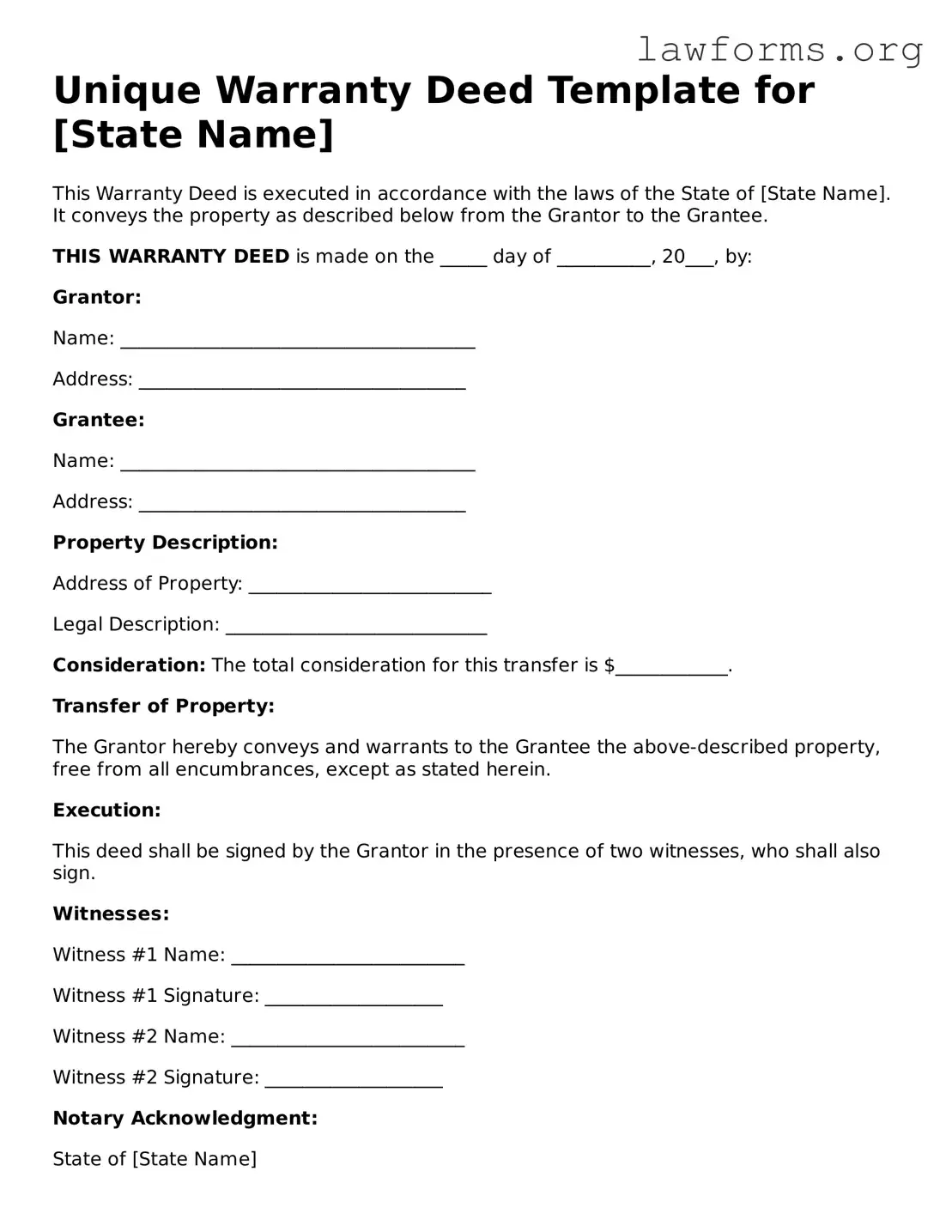Unique Warranty Deed Template for [State Name]
This Warranty Deed is executed in accordance with the laws of the State of [State Name]. It conveys the property as described below from the Grantor to the Grantee.
THIS WARRANTY DEED is made on the _____ day of __________, 20___, by:
Grantor:
Name: ______________________________________
Address: ___________________________________
Grantee:
Name: ______________________________________
Address: ___________________________________
Property Description:
Address of Property: __________________________
Legal Description: ____________________________
Consideration: The total consideration for this transfer is $____________.
Transfer of Property:
The Grantor hereby conveys and warrants to the Grantee the above-described property, free from all encumbrances, except as stated herein.
Execution:
This deed shall be signed by the Grantor in the presence of two witnesses, who shall also sign.
Witnesses:
Witness #1 Name: _________________________
Witness #1 Signature: ___________________
Witness #2 Name: _________________________
Witness #2 Signature: ___________________
Notary Acknowledgment:
State of [State Name]
County of _________________________________
On this _____ day of __________, 20___, before me personally appeared _____________________, known to me to be the person(s) whose name(s) are subscribed to the within instrument, and acknowledged to me that they executed the same in their authorized capacity.
Notary Public Signature: __________________
My commission expires: ___________________
